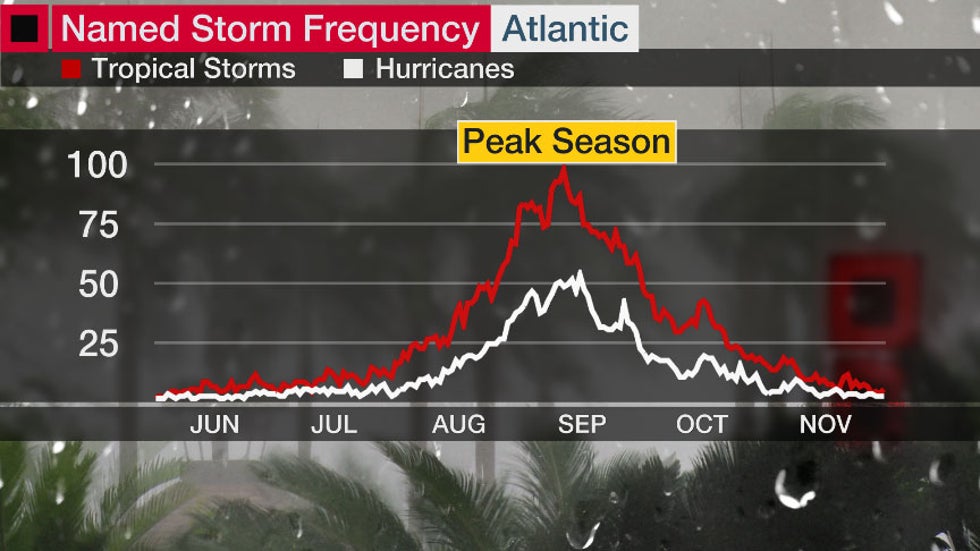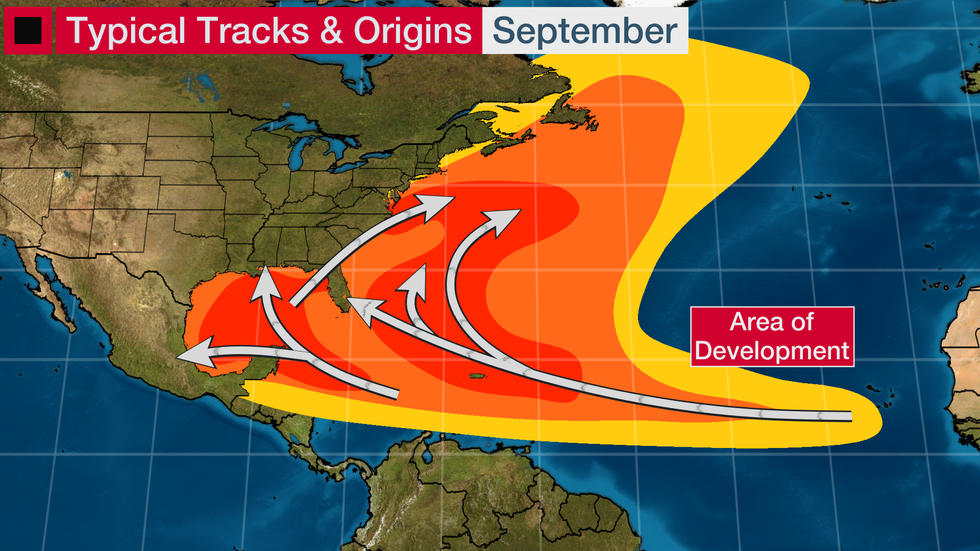weather.com meteorologists
Tropical Storm Omar developed well off the U.S. East Coast and shattered another hurricane season record, but is not a threat to any land areas.
A Hurricane Hunter mission confirmed a closed surface low with enough thunderstorms organized around it to deem it Tropical Depression Fifteen on Monday.
Tuesday afternoon, satellites estimated surface winds of at least 40 mph as it was over 200 miles east of Hatteras, North Carolina, making Omar the 15th named storm of the 2020 Atlantic hurricane season.
Fortunately, Omar is no land threat. It will be steered toward the east-northeast into the Atlantic Ocean between the coast of New England and Bermuda.
Wind shear will take its toll, and Omar will likely spin down to a remnant low by later this week.
 Current Status and Forecast Path
Current Status and Forecast PathSome modest rise swells could produce some choppy surf along the East Coast from North Carolina's Outer Banks to southeast New England the next few days, which could produce some rip currents. However, no significant coastal flooding is anticipated.
Omar became the record-earliest 15th storm of any Atlantic hurricane season, beating the previous earliest 15th storm - Ophelia on Sept. 7, 2005 - by almost a week, according to Colorado State University tropical scientist Phil Klotzbach.
Entering the Peak of Hurricane Season
September is the peak month of hurricane season, and the most active day of the year is around Sept. 10, on average.
Colorado State University tropical scientist Phil Klotzbach said that roughly three-quarters of Atlantic hurricane seasons since 1966 have had at least one active named storm on Sept. 10. Also, half of all seasons have had at least one active hurricane on this date.
This doesn't guarantee every Sept. 10 will have a rash of Atlantic named storms.
There's an overlap of favorable factors in early-mid September, including ocean water reaching its highest temperature, the atmosphere's ability to generate thunderstorms hitting its peak, hostile shearing winds declining to a minimum and a parade of disturbances known as tropical waves acting as seeds for development that, while peaking in July, are numerous in September.

Tropical storms and hurricanes can form just about anywhere in the Atlantic Ocean this time of year.
The most common source of tropical storms begins to shift from tropical waves in the first half of the month toward cold fronts and other low pressure systems late in the month.

With 15 tropical storms on the books already, most forecasting agencies, including IBM, are forecasting 4 to 10 more tropical storms, which may include 3-7 more hurricanes.
Now is the time to make sure you have a hurricane plan in case another storm threatens this season.
Hurricane season continues until the end of November.
The Weather Company’s primary journalistic mission is to report on breaking weather news, the environment and the importance of science to our lives. This story does not necessarily represent the position of our parent company, IBM.
The Weather Company’s primary journalistic mission is to report on breaking weather news, the environment and the importance of science to our lives. This story does not necessarily represent the position of our parent company, IBM.

No comments:
Post a Comment